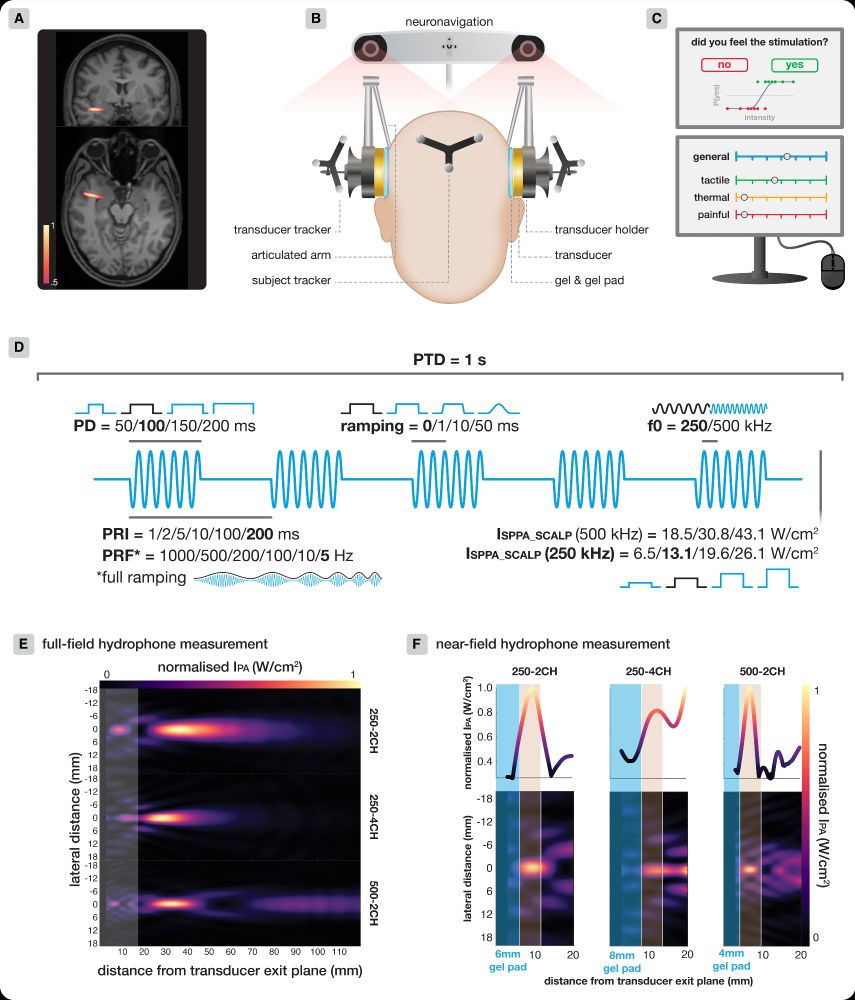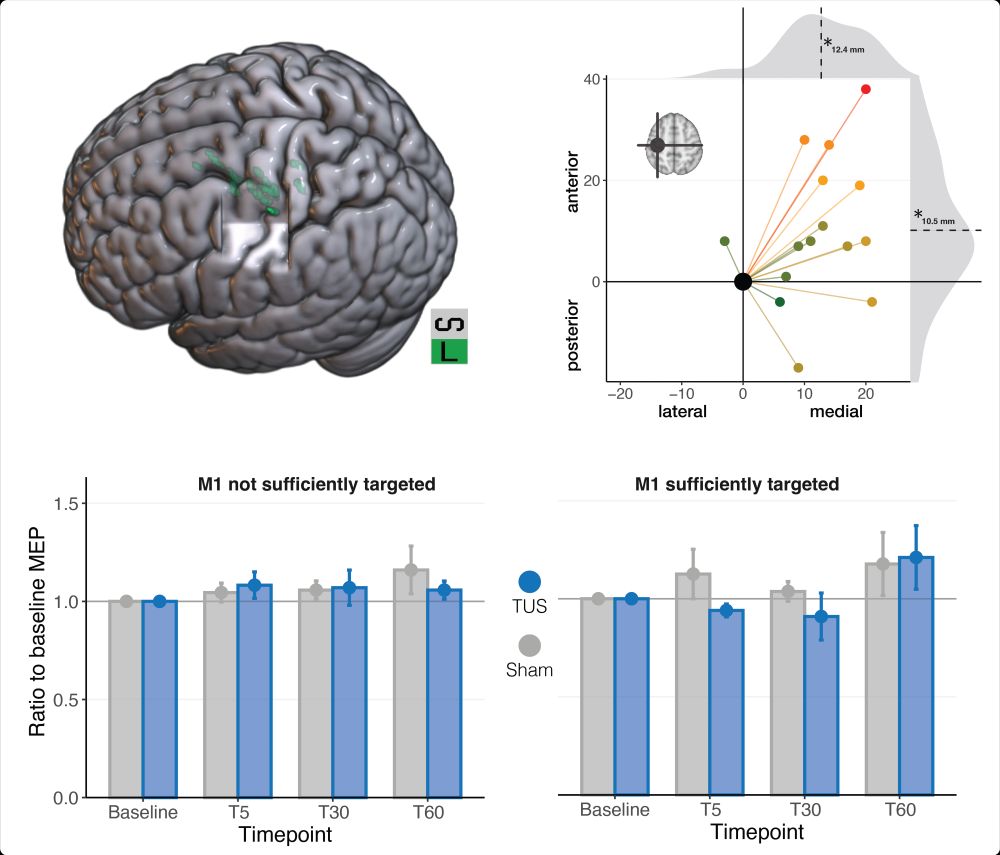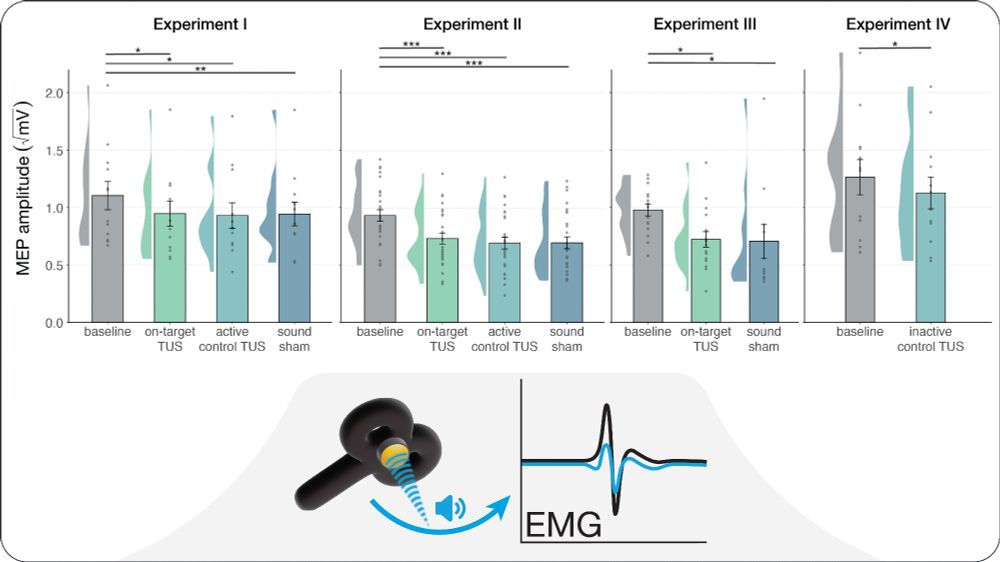
- Eliminate near-field intensity peaks in the scalp
- Use larger aperture areas
- Apply ramping
- Deliver equivalent doses via longer, lower intensity pulses
- Apply higher PRFs (≥200 Hz)
- Apply higher f0 (e.g., 500 vs 250 kHz)

- Eliminate near-field intensity peaks in the scalp
- Use larger aperture areas
- Apply ramping
- Deliver equivalent doses via longer, lower intensity pulses
- Apply higher PRFs (≥200 Hz)
- Apply higher f0 (e.g., 500 vs 250 kHz)

- Eliminate near-field intensity peaks in the scalp
- Use larger aperture areas
- Apply ramping
- Deliver equivalent doses via longer, lower intensity pulses
- Apply higher PRFs (≥200 Hz)
- Apply higher f0 (e.g., 500 vs 250 kHz)

- Eliminate near-field intensity peaks in the scalp
- Use larger aperture areas
- Apply ramping
- Deliver equivalent doses via longer, lower intensity pulses
- Apply higher PRFs (≥200 Hz)
- Apply higher f0 (e.g., 500 vs 250 kHz)






